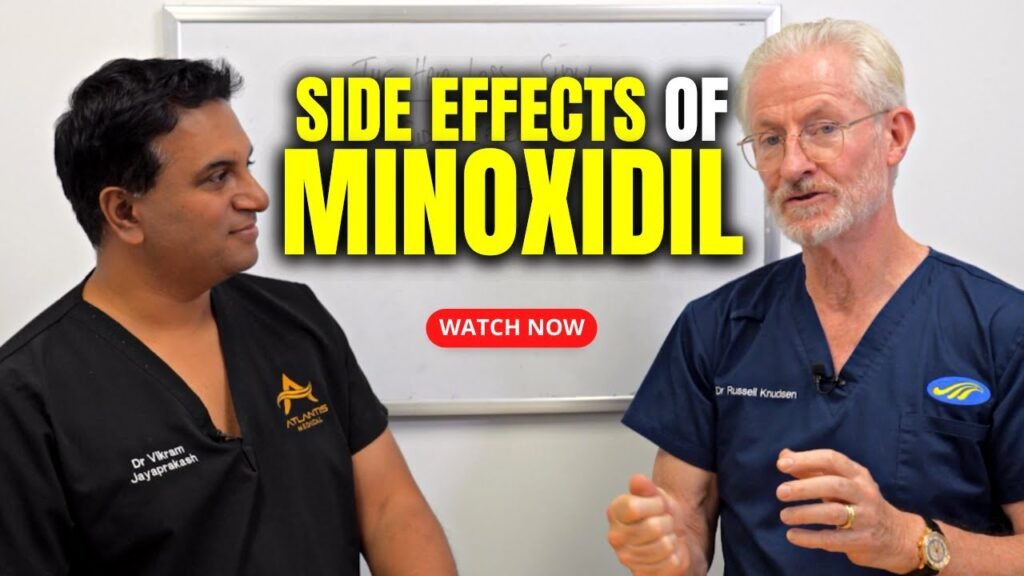Understanding Minoxidil: A Brief Overview
Minoxidil is a well-known topical medication primarily used to treat hair loss and stimulate hair growth. Originally developed as an oral medication for hypertension, its hair growth side effects led to its reformulation as a topical solution. It is widely recognized under brand names such as Rogaine and is available in various strengths, typically 2% and 5% solutions. The medication is FDA-approved for treating androgenetic alopecia, a common form of hair loss in both men and women, making it a popular choice for those seeking non-invasive hair restoration options.
How Minoxidil Works
The exact mechanism by which minoxidil promotes hair growth is not fully understood, but it is believed to work by prolonging the anagen phase, or growth phase, of the hair cycle. By enhancing blood flow to hair follicles, minoxidil may help to increase follicular size and hair shaft diameter, resulting in thicker and fuller hair. Regular application to the scalp is crucial for achieving desired results, as the effects of minoxidil are not permanent and tend to diminish once usage is discontinued.
Who Can Benefit from Minoxidil?
Minoxidil is suitable for individuals experiencing early stages of hair thinning or pattern baldness. It is most effective for those who have small, actively thinning areas rather than large, bald patches. Men and women alike can benefit from minoxidil, although it is essential to use formulations specifically designed for each gender to ensure safety and efficacy. While some users may begin to see results within a few months, it typically takes at least four to six months of consistent use to notice significant improvement in hair density and coverage.
Common Side Effects of Minoxidil
Minoxidil, a popular topical treatment for hair loss, is generally well-tolerated, but like any medication, it can have side effects. Users of minoxidil may experience a variety of reactions, most of which are mild and temporary. The most frequently reported side effect is scalp irritation, which can manifest as itching, dryness, or flaking. This occurs because the alcohol and propylene glycol in minoxidil solutions can sometimes cause skin sensitivity. To mitigate these effects, users can try a lower concentration or switch to a foam formulation, which often contains fewer irritating ingredients.
Dermatological Reactions
Some users may experience more pronounced dermatological reactions. These include redness, burning sensation, or rash on the application site. Although less common, these symptoms can be bothersome and may require discontinuation of the product if they persist. Users are advised to apply the medication only to the affected areas and avoid contact with other parts of the body to minimize these reactions. If irritation becomes severe, consulting a healthcare professional is recommended to ensure appropriate management and to rule out allergic reactions.
Unwanted Hair Growth
Another side effect of minoxidil is unwanted hair growth, also known as hypertrichosis. This occurs when the medication inadvertently spreads to other areas, leading to hair growth in places like the forehead or cheeks. To prevent this, users should wash their hands thoroughly after application and avoid contact with other skin surfaces. Additionally, using the recommended dosage and applying the product precisely can help minimize the risk of unwanted hair growth. While this side effect is typically reversible upon discontinuation, it can be concerning for some users and warrants careful application practices.
What Causes Minoxidil Facial Swelling?
Minoxidil is a popular topical treatment commonly used to combat hair loss. While it is effective for many, some users report experiencing facial swelling as a side effect. Understanding the underlying reasons for this reaction can help users manage and mitigate its occurrence. One primary cause of minoxidil-induced facial swelling is an allergic reaction. When applied, the body may perceive minoxidil as a foreign substance, triggering an immune response that results in inflammation and swelling, particularly around the face.
Another potential cause of facial swelling is the systemic absorption of minoxidil. Although minoxidil is designed for topical use, a small amount can be absorbed into the bloodstream, especially when applied in excessive quantities or over large areas. This can lead to fluid retention and swelling in various parts of the body, including the face. Individuals with a history of cardiovascular issues may be more susceptible to this side effect, as minoxidil was initially developed as an oral medication for hypertension due to its vasodilatory properties.
Lastly, improper application of minoxidil can contribute to facial swelling. Users who inadvertently apply the solution to areas other than the scalp, such as the forehead or temples, may experience localized swelling. This can be exacerbated by factors like hot weather or sweating, which increase the likelihood of the solution spreading beyond the intended area. To minimize the risk of facial swelling, it is crucial to follow application instructions carefully and consult with a healthcare provider if swelling persists or worsens.
How to Manage and Prevent Facial Swelling from Minoxidil
Minoxidil is a popular topical treatment for hair loss, but some users may experience side effects, such as facial swelling. To effectively manage and prevent this reaction, it’s crucial to understand the underlying causes and implement strategies to minimize the risk. Facial swelling may occur due to an allergic reaction or excessive application of the product, leading to increased absorption and subsequent systemic effects.
Use the Recommended Dosage
To prevent facial swelling, adhere strictly to the recommended dosage of minoxidil. Over-application can lead to increased absorption into the bloodstream, potentially causing unwanted side effects, including swelling. Typically, the advised dosage is 1 ml applied twice daily for men and once daily for women, but it’s essential to follow your healthcare providers instructions. Avoid applying more than the suggested amount in hopes of faster results, as this can exacerbate side effects.
Monitor and Adjust Application Techniques
Proper application techniques can significantly reduce the likelihood of facial swelling. Apply minoxidil only to the affected areas of the scalp and ensure it does not drip onto your face. Consider using a dropper for precise application, and allow the solution to dry completely before lying down or engaging in activities that may cause the product to spread. If you notice swelling, take a break from the treatment and consult with a healthcare professional to assess whether continued use is advisable.
Consult with a Healthcare Professional
If you experience persistent or severe facial swelling while using minoxidil, it is essential to seek medical advice. A healthcare professional can help determine if the swelling is due to an allergic reaction or another cause. They may recommend discontinuing the product or switching to an alternative treatment. Never ignore significant side effects, as they may indicate a need for immediate medical attention or a change in your treatment plan.
When to Seek Medical Advice for Minoxidil Side Effects
While minoxidil is a popular treatment for hair loss, its crucial to be aware of its potential side effects and understand when medical intervention is necessary. Some individuals may experience mild side effects that typically resolve on their own, such as slight scalp irritation or itching. However, if these symptoms persist or worsen, it is advisable to consult with a healthcare professional to ensure there is no underlying issue that needs addressing.
Severe Reactions
In rare cases, minoxidil can cause more severe side effects that require immediate medical attention. If you experience symptoms such as chest pain, rapid heartbeat, dizziness, or swelling of the hands and feet, its imperative to seek medical advice promptly. These could be signs of a more serious reaction, and a healthcare provider can determine the best course of action, which may include discontinuing the use of minoxidil or exploring alternative treatments.
Allergic Reactions
An allergic reaction to minoxidil, though uncommon, is another reason to contact a healthcare professional. Symptoms may include rash, hives, difficulty breathing, or swelling of the face, lips, tongue, or throat. These signs indicate a potentially life-threatening condition known as anaphylaxis, and immediate medical intervention is critical. Always inform your doctor of any known allergies prior to starting a new medication to minimize the risk of adverse reactions.


